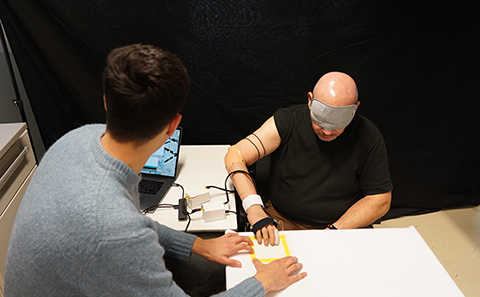Get the latest tech news
Why prosthetic limbs need not look like real ones
Designers are experimenting with tentacles, spikes and third thumbs
Although it is an art piece, it is one inspired by some intriguing recent developments in neuroscience that suggest there is no reason—at least from first neurological principles—why prosthetic limbs need to look or behave like the biological ones they replace. Prosthetic limb-makers have long hoped to take advantage of embodiment to make their designs feel like extensions of the body rather than foreign objects attached to it. In a series of experiments in 2018 and 2020 Tamar Makin, a neuroscientist who runs the Plasticity Lab at the University of Cambridge, used functional magnetic-resonance imaging, which records blood flow in different parts of the brain, to peer into the heads of one-handed amputees.
Or read this on r/technology
